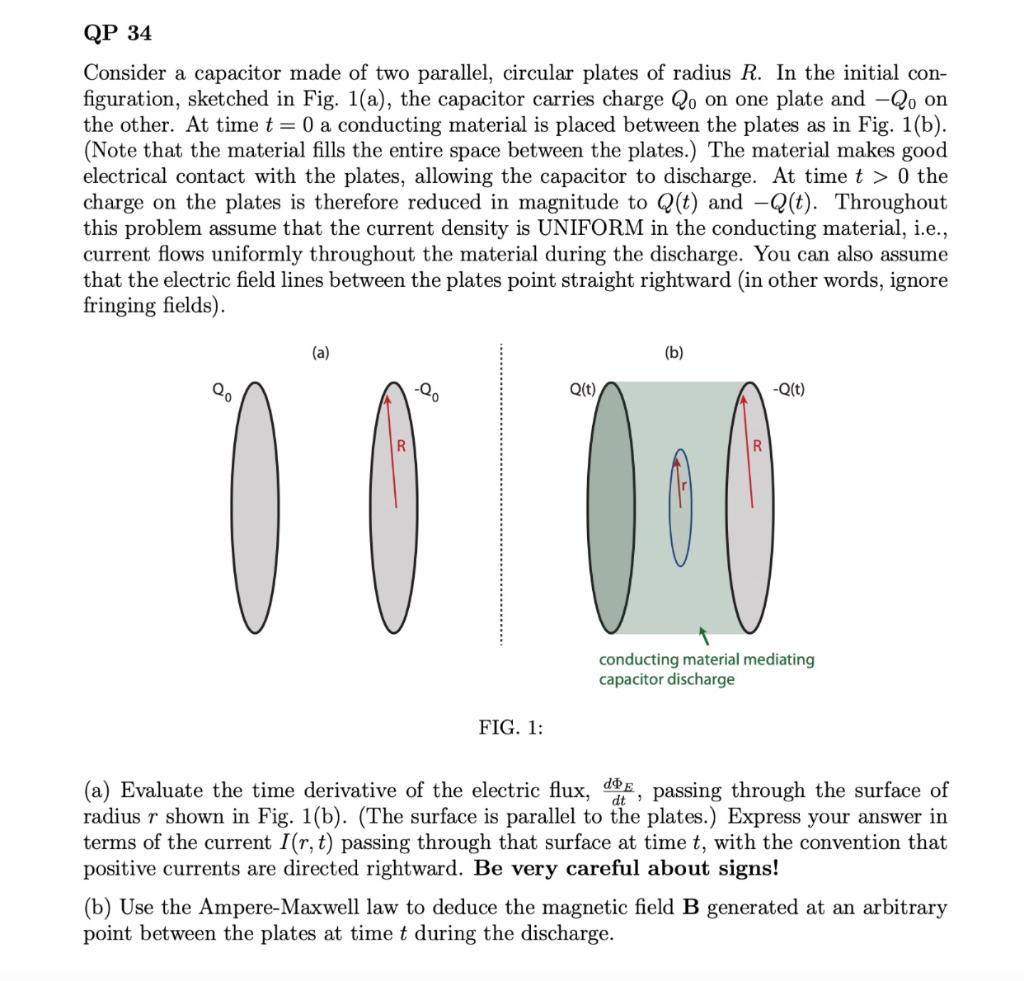Home /
Expert Answers /
Advanced Physics /
consider-a-capacitor-made-of-two-parallel-circular-plates-of-radius-r-in-the-initial-configurati-pa921
(Solved): Consider a capacitor made of two parallel, circular plates of radius R. In the initial configurati ...
Consider a capacitor made of two parallel, circular plates of radius . In the initial configuration, sketched in Fig. 1(a), the capacitor carries charge on one plate and on the other. At time a conducting material is placed between the plates as in Fig. 1(b). (Note that the material fills the entire space between the plates.) The material makes good electrical contact with the plates, allowing the capacitor to discharge. At time the charge on the plates is therefore reduced in magnitude to and . Throughout this problem assume that the current density is UNIFORM in the conducting material, i.e., current flows uniformly throughout the material during the discharge. You can also assume that the electric field lines between the plates point straight rightward (in other words, ignore fringing fields). (a) (a) (b) conducting material mediating capacitor discharge FIG. 1: (a) Evaluate the time derivative of the electric flux, , passing through the surface of radius shown in Fig. 1(b). (The surface is parallel to the plates.) Express your answer in terms of the current passing through that surface at time , with the convention that positive currents are directed rightward. Be very careful about signs! (b) Use the Ampere-Maxwell law to deduce the magnetic field generated at an arbitrary point between the plates at time during the discharge.
